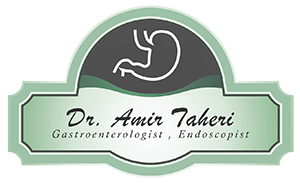Colonoscopy
Colonoscopy
The colon consists of several parts that perform various tasks. One of these tasks is the absorption of water and minerals and the disposal of wastes. The colon is called the end of the stream where the waste material is collected before it is disposed.The colon can have some diseases, including cancer, during cellular changes, which are required to diagnose or detect pre-cellular changes. This area should be monitored by the physician. This study is done by a method called colonoscopy. Which is to choose a therapeutic approach. This technique is used to diagnose diseases, including colon, inflammation, polyps, infections, and colon cancer that affects the colon.
Colonoscopy
The colonoscopy is referred to by the colonoscopy. A colonoscopy is a flexible device that the physician emits through the intestine through the camera on which it is located and a fiber opens. The camera placed on the colonoscope is connected to a monitor that shows the image of the intestine on the maniote, and the doctor can easily check the cells and the intestinal mucosa.
Performing a colonoscopy requires special conditions and preparation, so that the inside of the intestine is to be completely clean to make accurate and accurate diagnosis. For this reason, three days before the exercise, one needs to avoid the use of hard foods, and so is a soft diet, and two days before, it is better to use fluids to reduce the amount of stool. From the day before, one has to use a powder called Pylorolex, which must be dissolved in 4 liters of water or 4 liters of water, and every 15 minutes take one glass of it. However, if necessary, it may also be requested by the dentist. All of this leads to increased bowel function and complete emptying of the intestine. The person should go to the clinic or hospital immediately after taking the powder to take the colonoscopy.
Some of the causes of colonoscopy can be:
• A person suffering from colorectal cancer in the small intestine or small intestine
• A person who has a polyp: A gastroenterologist, if he or she sees the polyps in the intestine, removes them using a colonoscopy and sends it to the lab for cancer diagnosis and further examination. The gut pulp is very common, and if any The sooner it can be treated, the advanced colon cancer and colon cancer can be prevented. If it is bleeding during the removal of the polyp, it will be prevented by an electrical probe.
• In cases of high colorectal cancer or family history, a gastroenterologist suggests having colonoscopy at an earlier age.
• Colonoscopy is approved by the American Gastroenterology Association.
• In cases of rectum or stool.
• Dark stool examination
• Examination of chronic diarrhea in individuals
• Check weight loss suddenly or without reason.
• Colonoscopy for the treatment of diseases associated with inflammation of the intestine
• When in MRI imaging, CT scan is observed for abnormal results and is prescribed by the gastroenterologist to confirm colonoscopy results.
• Abdominal pain that can last for a long time.
How do colonoscopy work?
Before performing colonoscopy
This test is usually done in a hospital, clinic, or gastroenterologist. A sedative is injected into the patient and the patient feels drowsiness so that during the course of the test the colonoscopy is not accurately and accurately known. The colonoscopy should carry special colonioscopy day to the patient Lower the left side and lower your knees to the abdomen, and then the colonoscopy doctor enters the anus and moves it slowly in the intestine. For better examination, the lining of the large intestine is filled with air and the camera It will display better images.




